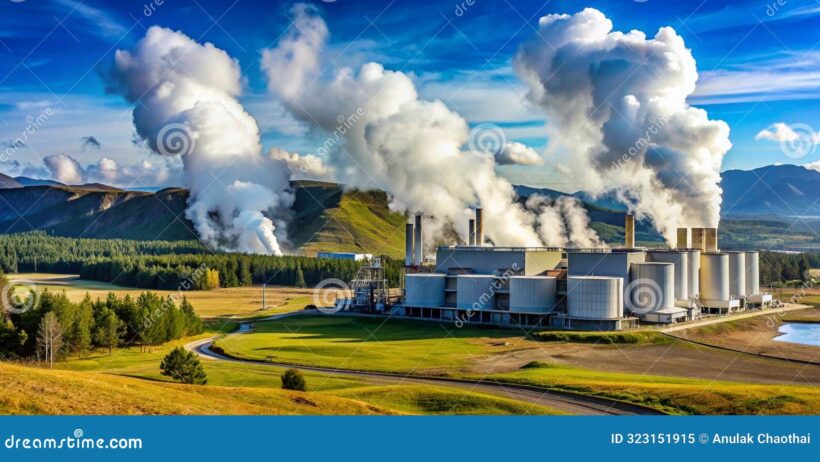Geothermal energy, often underrated and overshadowed by other renewable sources, is a powerhouse of sustainable potential nestled deep within the Earth. Harnessing this energy could serve as a fulcrum for reducing our reliance on fossil fuels, but the path to realizing its full capacity necessitates an informed and proactive approach towards conservation and protection.
Understanding geothermal energy begins with the fundamental concept of Earth’s heat. The planet’s core emits thermal energy generated through radioactive decay and residual heat from its formation. This heat seeps through the Earth’s crust, heating underground water reservoirs, which can be tapped for energy. The allure of geothermal energy lies in its continuous availability—as an inexhaustible resource, it can provide baseload power, unlike solar or wind energy, which are sporadic and dependent on weather conditions.
To conserve this invaluable resource, one must first embark on a quest for comprehension. Educational initiatives aimed at local communities about the benefits and workings of geothermal energy are crucial. This knowledge can lead to a grassroots movement advocating for geothermal investments. Workshops, seminars, and online courses should be organized to demystify the technology and elucidate its substantial environmental benefits. Through cultivating an informed public, the demand for geothermal installations can burgeon, thereby accelerating its adoption.
In tandem with education, sustainable management of geothermal resources is imperative. This includes careful site selection for geothermal plants. Developers must consider the geological characteristics and ensure that the extraction of heat does not exceed the natural replenishment rate. The implementation of ecological guidelines during exploratory drilling can mitigate the risk of causing land subsidence or the depletion of geothermal reservoirs. Such practices are indispensable in preserving the ecological balance and ensuring that geothermal power remains a viable option for generations.
Monitoring is also a pivotal element in geothermal conservation. This involves the establishment of stringent protocols for overseeing the operational processes of geothermal plants. Continuous evaluation of environmental impacts—such as air and water quality, land stability, and biodiversity—is essential. Moreover, employing advanced monitoring technologies can facilitate real-time data collection, enabling the optimization of energy extraction while safeguarding surrounding ecosystems.
Another significant aspect is the promotion of hybrid systems that integrate geothermal energy with other renewable sources. By utilizing geothermal energy in conjunction with biomass, wind, or solar power, systems can harness complementary advantages, leading to enhanced efficiency. This symbiotic relationship can also reduce the carbon footprint and foster sustainability. A multifaceted approach not only diversifies energy supplies but also strengthens the resilience of energy systems against climatic variations.
Furthermore, the role of local governments and policies cannot be understated. Legislative frameworks that incentivize geothermal energy exploration and production can catalyze advancements. This could include tax breaks, grants, or easing of regulations to encourage private investment. Government-backed financial assistance for research and development in geothermal technologies can further stimulate innovation that enables greater energy efficiency and resource management.
Public-private partnerships hold immense potential for advancing geothermal projects. Collaborations between governmental entities and private investors can leverage financing, technical expertise, and resources. These alliances foster a climate of innovation, allowing for the pooling of knowledge essential for tackling common challenges in geothermal exploration and conservation.
On a local scale, community engagement plays a vital role in the successful implementation of geothermal energy projects. Residents must be actively involved in discussions surrounding geothermal developments in their areas. Public forums should be structured, allowing community members to voice their concerns, expectations, and aspirations. Fostered through transparent communication, trust can be built, paving the way for collaborations that tap into local expertise and foster volunteerism.
Exploring the diversity of geothermal applications is equally important. Beyond electricity generation, geothermal energy can also be used for direct applications such as heating greenhouses, aquaculture, and district heating systems. Efforts should focus on broadening public awareness around these opportunities. By illuminating the varied utilizations of geothermal energy, potential benefits can be maximized and explain the reduction of overall carbon emissions across multiple sectors.
Cultivating a culture of conservation regarding geothermal energy requires a re-evaluation of how we regard the Earth. Our relationship with natural resources should pivot towards sustainability and preservation. The enchantment of geothermal energy lies not only in its capacity to generate power but also in its promise for a cleaner, greener future. Emphasizing principles of stewardship, individuals and communities alike must embrace the conscientious use of geothermal resources. This necessitates a commitment to sustainability, ensuring that the benefits of geothermal energy are realized without compromising ecological integrity.
In conclusion, confronting the climate challenges of the present requires a significant shift in perspective. Geothermal energy stands out as an underappreciated ally in this fight. Through education, sustainable management, policy support, community engagement, and a holistic approach to energy generation, geothermal energy can be conserved and its protective measures reinforced. To protect Earth’s hidden power, we must act decisively and collaboratively—transforming an overlooked resource into a beacon of hope in our battle against climate change.




